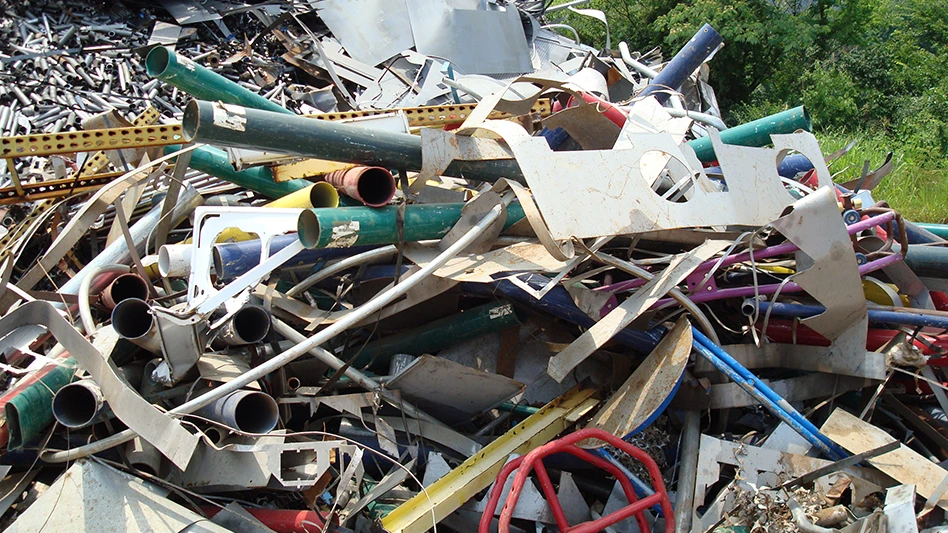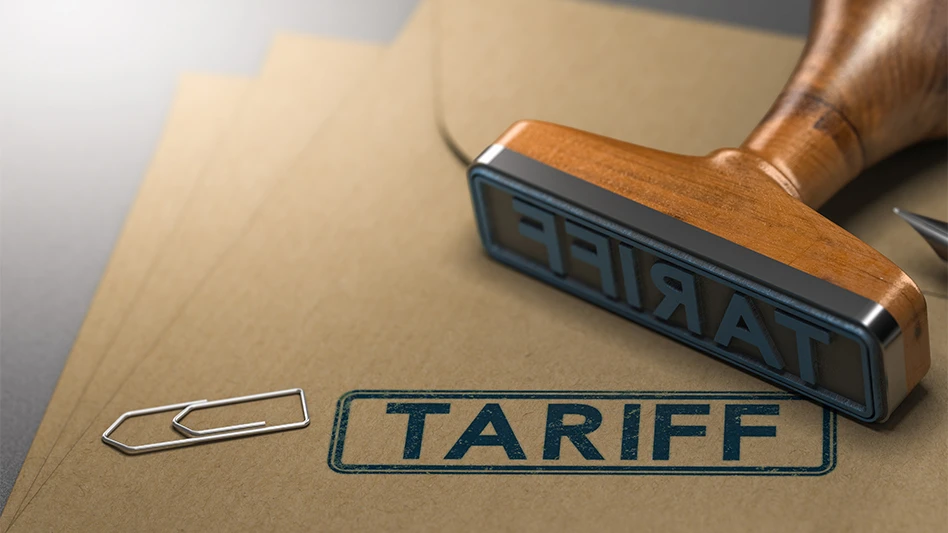
Around for millennia and a ubiquitous presence, paper is being affected by a variety of modern trends. The growth of the digital world is changing reading habits, use of free time, the way we work and buying behaviors. Ecological awareness of limited resources and the impacts of waste also is growing.
Changes in paper consumption and production reflect themselves in recovered paper (RCP) generation.
What is the result when these different forces come together in Europe?
We need to look at two different areas to understand the existing situation: RCP demand, which is linked to paper production, and supply, which is tied to paper consumption.
Growing demand For recovered paper
European paper production is facing overall stagnation. Residual growth results from a marked decline in graphic paper production that is opposed by growth in packaging and, to a lesser extent, tissue production.
Graphic paper faces the effects of digitalization, with advertising spending shifting toward digital media, and reductions in pages and basis weights.
On the other hand, packaging has been growing. Global trade (even though the effects from e-commerce are not yet as visible in Europe as they are in the U.S.) and economic recovery are supporting increased production. Additionally, plastic substitution and sustainability issues are driving packaging research. As opposing trends, minimization of packaging and lightweighting are reducing demand volumes.
Finally, Eastern Europe is catching up to Western Europe in tissue demand.
The developments we see in paper production are reflected in the fiber requirements for the different RCP grades. The European (EN 643) and North American gradings differ, so we will use the common terminology of old corrugated cardboard/containers (OCC), old newspapers (and magazines, ONP), high grades (HG) and mixed paper (MP).
Contrasting with a 0.3 percent decline per annum in virgin fiber consumption in the long term, RCP consumption is forecast to increase by 0.5 percent per annum until 2030 in Western Europe. This is mostly the result of increased production of containerboard and tissue, which translates into increased demand for OCC and MP primarily, with a slight increase in HG demand and decreased demand for ONP.
Eastern Europe will see overall growth of virgin and recovered fiber demand (about 3 percent per year), also dominated by production of containerboard. RCP consumption will grow 4.2 percent per year until 2030.
With an understanding of what is happening with demand allied to paper production, we must now step back and look at RCP from the supply side.
The supply side
RCP supply is influenced by three factors: paper consumption, collection and trade.
European paper consumption is growing at a similar rate as paper production. This means RCP collection potential, i.e., the amount of material theoretically available for collection, also is growing, though at a smaller rate, mainly because of the loss of tissue, which cannot be recovered and recycled.
Paper traditionally has been the most recycled product. Western Europe has the second highest collection rate for RCP (recovering approximately 75.3 percent of paper in 2017) behind Japan. In addition, governmental (or supragovernmental) policies and targets are in place to reduce landfill waste and increase recycling, promoted in great part by the European Union. The European Union’s Circular Economy Action Plan has set forth a 75 percent goal for paper recycling by 2025. To further improve RCP quality, the need for separate collection is re-emphasized in the plan. In addition, several agreements are driven by industry associations, e.g., the European Declaration on Paper for Recycling from the European Paper Recycling Council, aimed at reducing the environmental impact of paper manufacturing and increasing its recyclability. These are directed at producers but are relevant to RCP demand and procurement preferences.
The mandated targets and quality standards, detached from market conditions, lead to questions regarding cost allocation, competitiveness of RCP and collection and recycling system maintenance.
Looking more closely at trade, RCP availability is affected negatively by the fact that Europe is a net exporter, with the main destination being China. This situation has suffered great changes last year when China banned imports of MP, imposed 0.5 percent contamination limits on other grades and restricted RCP import licenses. The result was a price drop in Europe, which was good for paper producers but a difficult situation for the waste management industry. The scenario is probably going to change again in 2020, when China implements a total ban on scrap paper. Because demand still exists in China, the supply chains will have to adjust to satisfy it by producing pulp or containerboard elsewhere for export to China. This means paper for recycling collected in Europe will continue to flow outward.
However, other countries’ realization of the negative impact of accepting low-quality paper and their subsequent tightening of import requirements will impose further pressures on collection and sorting. For example, Indonesia has announced its intention to inspect all scrap paper shipments and to impose a 0.5 percent impurity limit.
Trade changes also might happen within Europe with the looming Brexit. Although nobody knows what to expect, we should keep in mind that in 2018, the U.K. exported 660,000 metric tons of RCP to the EU, according to Eurostat data.
A tightening balance
European RCP demand is increasing more than RCP collection potential. We estimate an 8-million-metric-ton increase in demand until 2025, contrasting with a 1-million-metric-ton increase in collection potential. This results in a diminishing RCP surplus (unused/uncollected RCP), an effect led mostly by HG and ONP. Overseas exports have an impact mostly on OCC, intensifying the overall surplus decrease. We modeled the supply-demand balance by region, taking into account local paper consumption and mill demand. What we discovered is that most of Europe is depleted, particularly in the center, for ONP and HG.
The supply-demand balance induces changes in fiber furnish because RCP prices move in relation to those of virgin fiber. Growth of RCP consumption is limited by increasing marginal costs of collection and declining raw material quality, namely increasing contaminants.
While containerboard furnish will remain constant in relation to its RCP share, the same cannot be said for tissue in mature European markets. Decline in graphic paper production is leading to decreasing supply of HG, and we should see the share of RCP in tissue decrease from 38 percent to 28 percent by 2030. In the case of graphic paper, RCP share will decrease slightly and, as mechanical pulp presence decreases in favor of chemical pulp, we will see a small but positive impact on RCP quality. The share of RCP in containerboard in Eastern Europe will increase.
What does this mean for scrap paper procurement? The RCP market tends to be more local, and paper producers increasingly want tighter control over the supply chain to guarantee the needed volume and quality. But Europe is not a uniform region, and practices vary from country to country. Prices dropped with China’s ban, especially for OCC and MP, and decoupled from virgin fiber prices. They already have risen and are expected to continue this trend for the next few years, entering the typical cyclicality. It is of note that China has the capability to pay more and will acquire the best quality.
A wealth of challenges
Paper producers are facing some challenges in accessing their required volumes, especially for certain grades. This is leading paper manufacturers to vertically integrate or cooperate more closely with suppliers and is forcing them to increase sourcing distances, which increases costs. At the same time, waste management companies are facing difficulties in sustaining their recycling systems after becoming too reliant on China, and not just for paper.
Increased collection volumes from e-commerce are not yet seen in Europe but likely will happen. With it also comes a shift from industrial to household collection, bringing new challenges that include sorting at the source to collecting small volumes over distributed areas.
Environmental concerns with and the movement against plastics are driving the development of paper-based alternatives, but increasing multilayer products cause recycling difficulties. Small but not insignificant volumes could be collected in a dedicated manner and supplied to specialized mills. For example, the charity Hubbub and Starbucks are cooperating in the U.K. to collect disposable coffee cups.
The use of recycled paper for food-contact items is still a concern, especially regarding contamination by mineral oils. These concerns have led to recommendations regarding the use of printing inks, glues and additives, which may give an advantage to paper recovered in countries that adhere to them. But, in general, the EU’s internal market of paper for food-contact materials is not well-harmonized.
Troubled times
Where does this leave us? RCP demand is growing, with packaging being the main driver. This places pressure on already high collection rates. Because of the decline in graphic papers, the situation is tighter for HG, which also are used outside of graphic applications to produce tissue and packaging (white top testliner, white lined chipboard).
We are still feeling the impacts from China’s import restrictions, though these impacts have lessened. The upcoming total ban will send new shock waves through the markets as Chinese mills still need the material and exporting countries need markets to absorb their RCP.
RCP exports to Europe will be more attractive for grades that are in short supply but will depend on quality and currency exchange rates. We must remember that RCP prices will be bound by virgin pulp prices.
In the midst of all this, we must not forget the environmental concerns, with policies that change the ecosystem of recovered paper. The situation is in a somewhat calmer plateau, but troubled times are ahead.

Explore the June 2019 Issue
Check out more from this issue and find your next story to read.
Latest from Recycling Today
- ReMA supports policy measures facilitating collection, safety and proper end-of-life management of small, medium batteries
- Balcones Recycling launches commercial recycling services in Phoenix
- Resynergi, Lummus Technology launch modular plastic recycling solution
- Shoe recycling the target of UK-based partnership
- If you melt aluminum scrap, 'Recycling Today' wants to hear from you
- Research claims lower environmental impact for PE packaging over other materials
- Update: Scrap metals included in emergency tariffs on Canada, Mexico
- OSC announces 2025 Packaging Innovation Award winners





